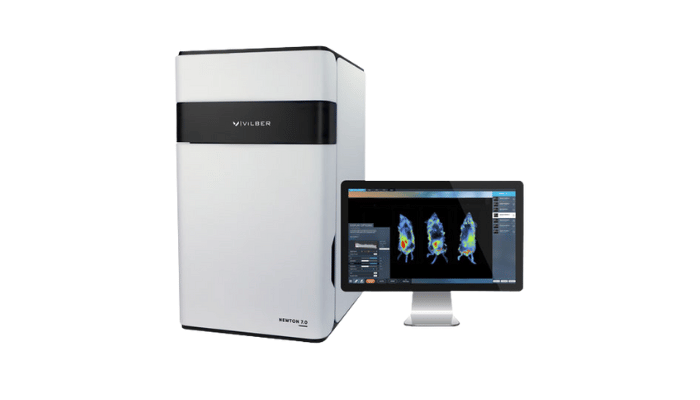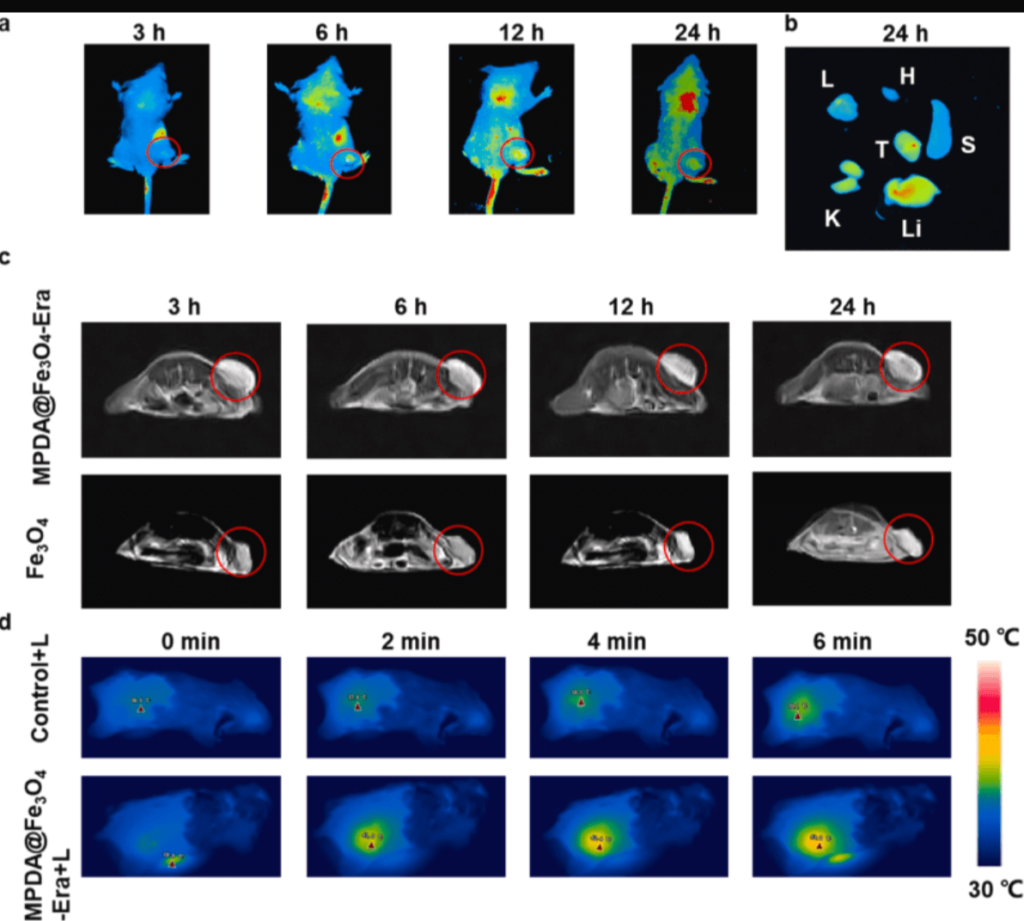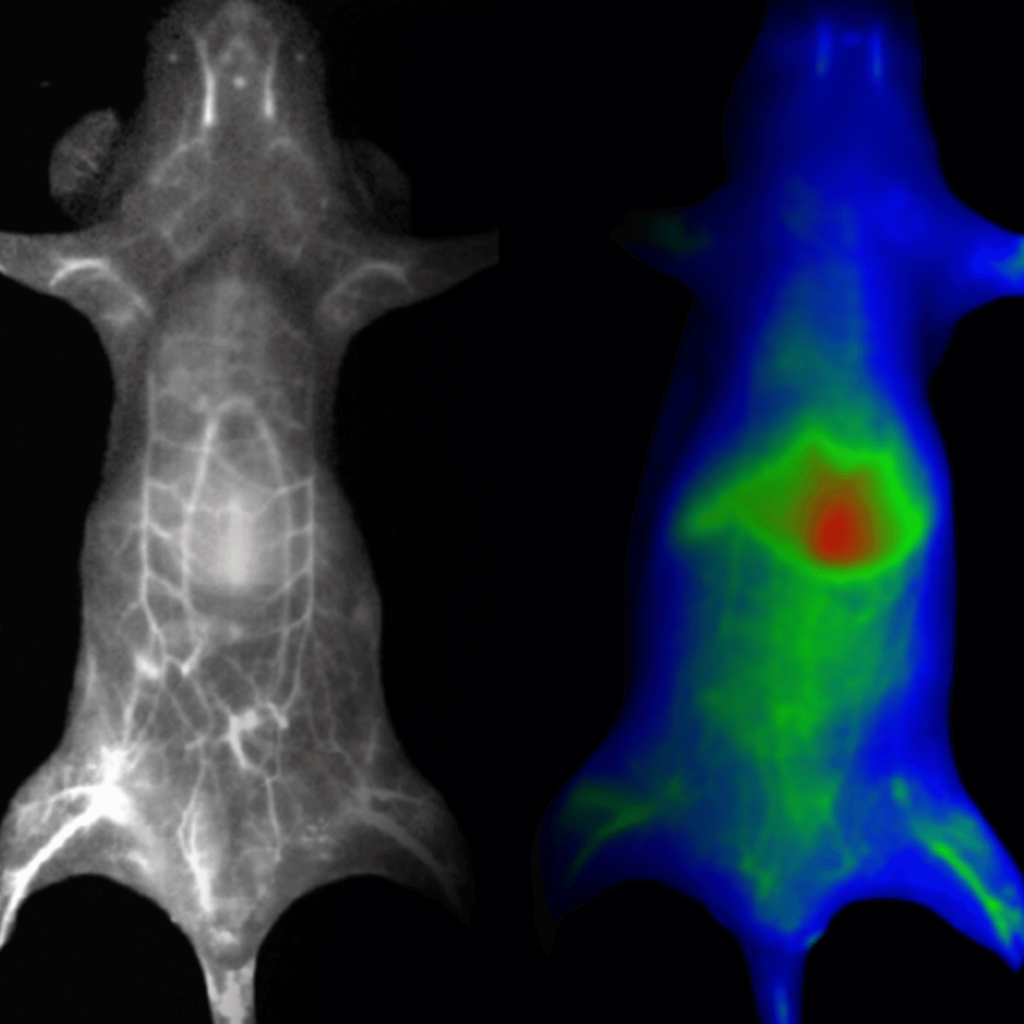System Used:
Newton 7.0

Authors:
Xie L, Chen W, Chen Q, Jiang Y, Song E, Zhu X, Song Y. Synergistic hydroxyl radical formation, system XC- inhibition and heat shock protein crosslinking tango in ferrotherapy: A prove-of-concept study of “sword and shield” theory. Mater Today Bio. 2022 Jul 7;16:100353. doi: 10.1016/j.mtbio.2022.100353. PMID: 35865409; PMCID: PMC9294558.
Benefits the System Provided:
These researchers leveraged the Newton 7.0’s high spatial resolution (thanks to the 4.6 MP CCD and f/0.7 lens) to get a detailed image of a Cy5 labeled nanoparticle distribution. The versatility of the system allowed the researchers to visualize distribution in vivo, in real-time, and then elucidate the deposition in with much greater specificity by imaging the organs ex vivo.
Abstract:
Ferroptosis provides new insights into the design of nanomedicines for improved cancer therapy; however, its antitumor efficacy is relatively low, owing to cancer cells’ self-protective mechanisms, such as heat shock protein (HSP) overexpression. Because lipid peroxidation (LPO) end products can modify/inhibit HSPs, we built a nanoplatform, MPDA@Fe3O4-Era, to boost intracellular reactive oxygen species (ROS) and LPO for synergistic ferrotherapy. The nanoplatform works well in the acidic environment of the tumor and under near-infrared stimuli, producing significant ROS and LPO, which disrupt cancer cells’ self-protection. The nanoplatform works well in the tumor’s acidic environment and under near-infrared stimuli, producing significant ROS and LPO that disrupt cancer cells’ self-protection.

